Picture this: a colossal pterosaur soaring through prehistoric skies, its wings spanning the length of a school bus, yet its mouth filled with nothing more than a few small teeth or sometimes no teeth at all. Meanwhile, down below, a saber-toothed cat prowls with daggers for canines but wings that exist only in fantasy. This isn’t just a quirky observation about ancient life—it’s one of evolution’s most fascinating trade-offs, where nature consistently chose aerial dominance over dental weaponry.
The Great Evolutionary Trade-Off
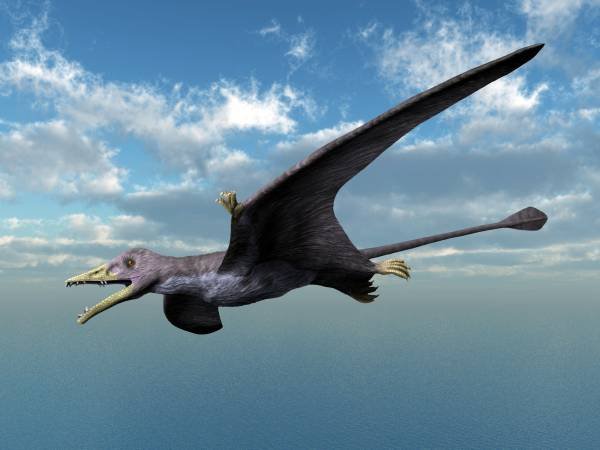
Evolution operates like a cosmic accountant, constantly balancing energy budgets and survival strategies. When it comes to flight, the math is brutally simple: every gram matters. A creature attempting to master the skies faces the same fundamental challenge as an aerospace engineer designing a fighter jet—weight is the enemy of lift.
The energy required to maintain flight increases exponentially with body mass, creating a biological ceiling that flying creatures simply cannot breach without sacrifice. Heavy jaws packed with massive teeth become evolutionary baggage, literally weighing down any animal trying to achieve sustained flight. This isn’t just theory—it’s a pattern we see repeated across millions of years and countless species.
Why Teeth Are So Expensive
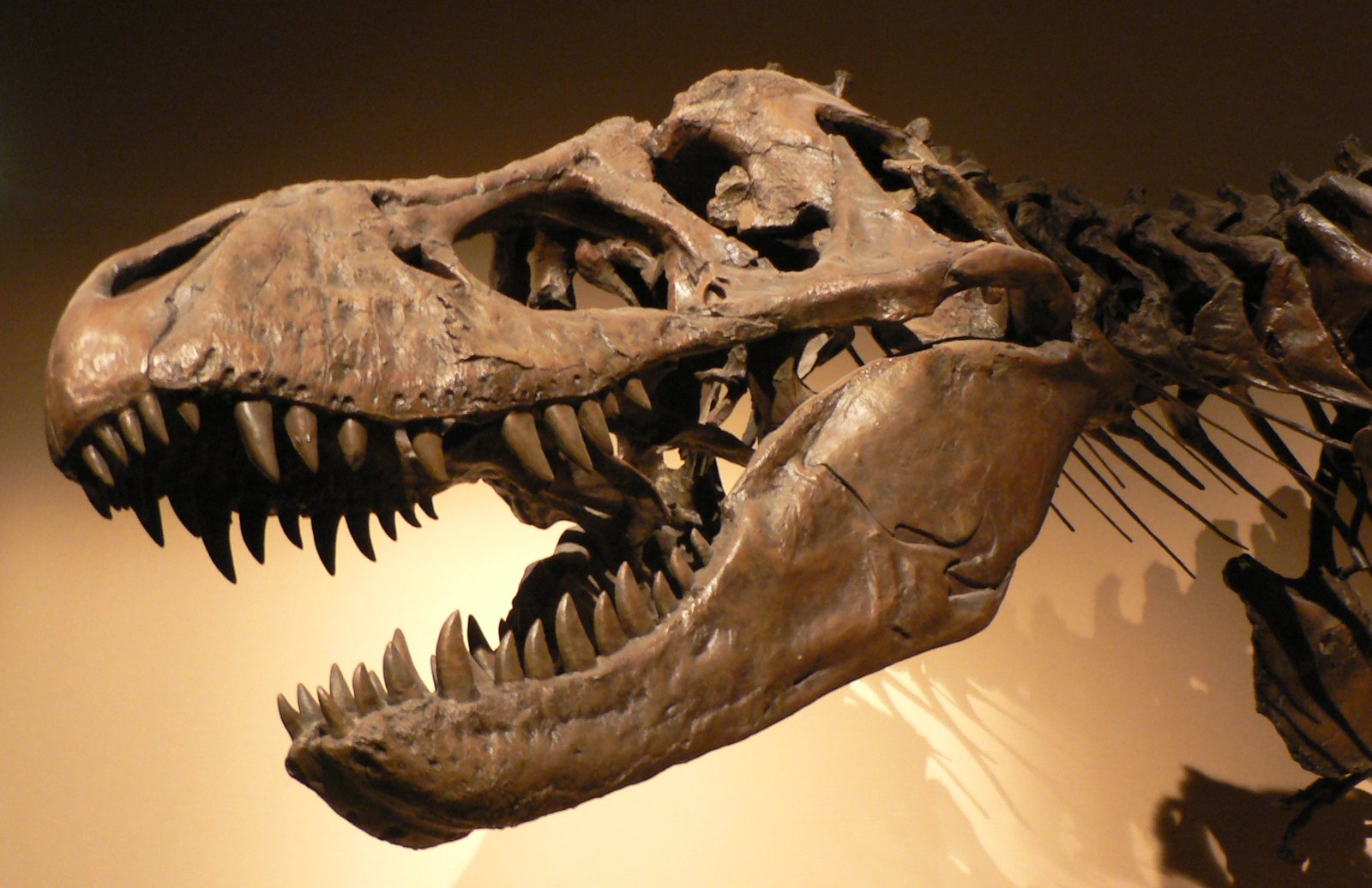
Teeth might seem like simple tools, but they’re actually biological masterpieces that come with a hefty price tag. Each tooth requires dense mineralization, creating weight that adds up quickly in large dental arrays. The jaw muscles needed to power these teeth add even more bulk, creating a cascade of anatomical commitments that ground-dwelling predators can afford but flying creatures cannot.
Consider the skull of a Tyrannosaurus rex, which could weigh over 600 pounds and house teeth up to 8 inches long. Now imagine trying to get that head off the ground with wings. The engineering simply doesn’t work—the muscle power required would demand a body so massive that flight becomes impossible.
The Pterosaur Paradox
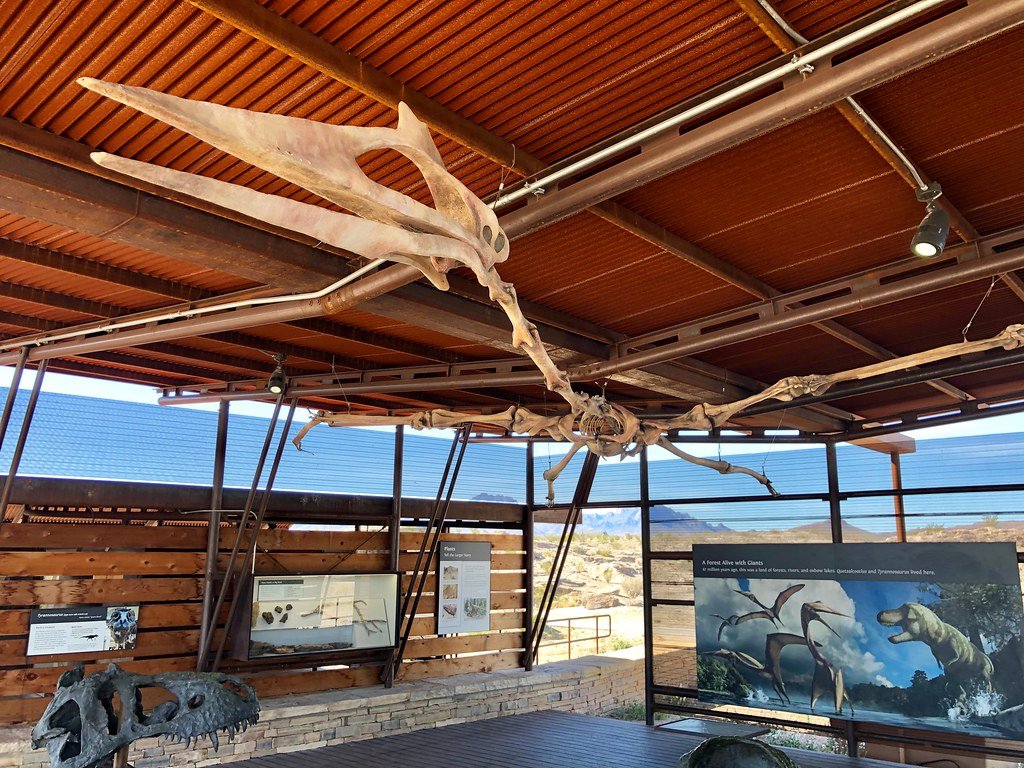
Pterosaurs represent evolution’s most dramatic experiment in trading bite for flight. These ancient reptiles, some with wingspans reaching 35 feet, dominated the skies for over 150 million years. Yet their success came at the cost of traditional predatory weapons—most pterosaurs had surprisingly small teeth, and many of the largest species were completely toothless.
The giant Quetzalcoatlus, one of the largest flying creatures ever known, possessed a skull nearly 10 feet long but weighed only about 50 pounds. This hollow, lightweight design allowed it to maintain flight despite its enormous size. Instead of relying on powerful jaws, it likely hunted by swooping down and swallowing prey whole, much like modern storks.
Modern Birds: The Ultimate Compromise

Today’s birds represent the most successful implementation of the wingspan-over-teeth strategy. The complete absence of teeth in modern birds isn’t an accident—it’s a 100-million-year evolutionary refinement. Birds have replaced heavy, mineral-dense teeth with lightweight beaks that can be specialized for countless feeding strategies without adding significant weight.
A golden eagle’s beak, despite being capable of tearing flesh, weighs a fraction of what equivalent teeth would weigh. This weight savings is then redistributed to flight muscles and hollow bones, creating a predator that can strike from above at speeds exceeding 150 mph. The trade-off isn’t just about weight—it’s about redefining what it means to be a predator.
The Bat’s Clever Compromise

Bats present a fascinating middle ground in evolution’s size-versus-bite equation. As the only mammals to achieve true flight, they’ve had to make their own compromises. Most bats maintain teeth but have drastically reduced their size and weight compared to their ground-dwelling relatives.
Vampire bats, for instance, have evolved razor-sharp teeth that are incredibly efficient but remarkably small. Their entire feeding strategy revolves around making tiny, precise cuts rather than delivering crushing bites. This allows them to maintain their aerial lifestyle while still being specialized predators—though their prey is limited to creatures they can land on and feed from directly.
The Physics of Flight Limitations

The relationship between body size and flight capability follows strict physical laws that no amount of evolutionary creativity can bypass. The square-cube law means that as an animal’s linear dimensions increase, its weight increases much faster than its wing area. This creates a fundamental ceiling on how large flying creatures can become.
Modern physics tells us that the theoretical maximum wingspan for a flying creature on Earth is somewhere around 40-50 feet, and that’s only if virtually everything is optimized for flight. Any investment in heavy teeth or powerful jaws pushes a creature closer to this limit, forcing evolution to choose between aerial prowess and dental weaponry.
Ground-Dwelling Giants and Their Massive Jaws

While flying creatures were busy shedding weight, ground-dwelling predators were free to pursue the opposite strategy. Creatures like Megalania, a giant monitor lizard from Australia, could afford to carry teeth the size of bananas because they never needed to leave the ground. These terrestrial titans represent the path not taken by flying creatures—maximum bite force without concern for weight.
The contrast becomes even more stark when we consider that many of these ground-dwelling predators were contemporary with flying giants. While Quetzalcoatlus ruled the skies with its toothless beak, massive crocodilians below sported jaws that could crush bone with the force of a truck collision. Each group had optimized for their respective domains.
Evolutionary Experiments Gone Wrong
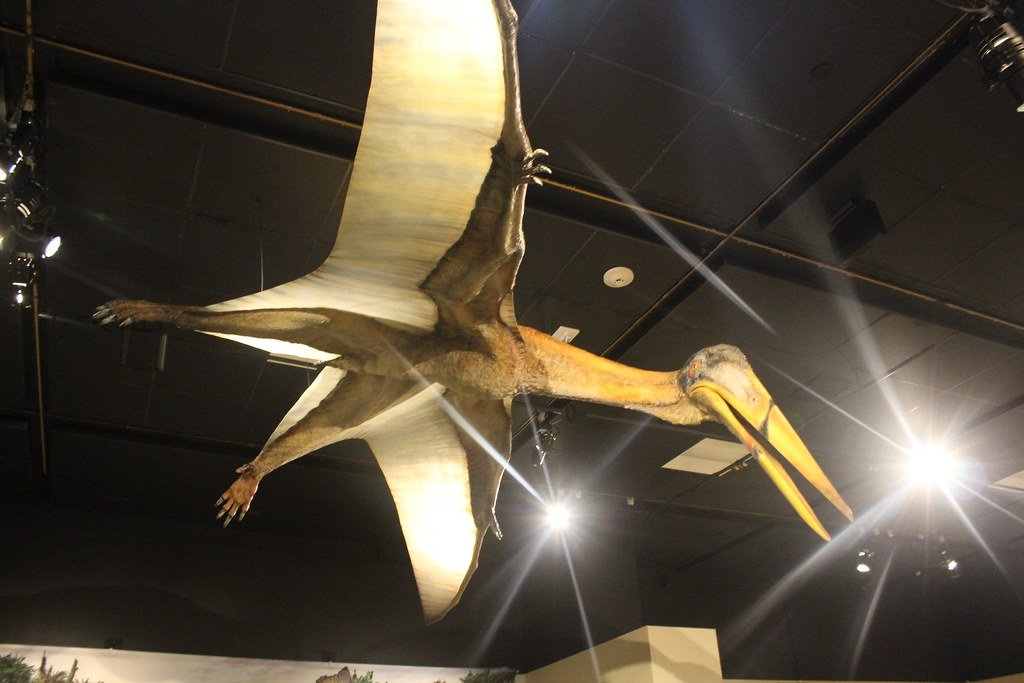
Not every attempt at combining flight with formidable teeth was successful. The fossil record is littered with creatures that tried to have it both ways and failed. Some early pterosaurs possessed relatively large teeth and correspondingly limited flight capabilities, suggesting they were transitional forms that hadn’t yet made the full commitment to aerial life.
These evolutionary experiments provide crucial insights into the trade-offs involved. Creatures that tried to maintain both heavy dental equipment and flight capability typically ended up being inferior at both—too heavy to fly efficiently, yet not powerful enough on the ground to compete with purely terrestrial predators.
The Insect Exception

Insects present a unique case study in the wingspan-versus-bite equation. Many flying insects maintain formidable mandibles while achieving remarkable aerial performance. However, this apparent contradiction dissolves when we consider scale—insect mandibles, while proportionally impressive, weigh virtually nothing in absolute terms.
A dragonfly’s mandibles might look fearsome under magnification, but they weigh less than a grain of sand. This allows insects to maintain both flight capability and effective hunting tools, though they’re limited to prey much smaller than themselves. The physics of flight work differently at this scale, where surface area effects dominate over weight considerations.
Marine Flyers: A Different Set of Rules

Flying fish and other marine “flyers” operate under entirely different physical constraints than true aerial creatures. Since they’re only briefly airborne and rely on initial water propulsion, they can afford to maintain heavier body structures. These creatures represent a fascinating middle ground—they achieve flight without making the permanent anatomical commitments required for sustained aerial life.
The four-winged flying fish can maintain its full complement of teeth because it’s not truly flying in the energetic sense. Instead, it’s gliding on momentum gained from powerful swimming, allowing it to keep both its predatory capabilities and its ability to escape predators through brief aerial excursions.
The Role of Hollow Bones

The evolution of hollow bones represents one of the most crucial innovations in the wingspan-over-teeth strategy. These pneumatized bones can be up to 90% lighter than solid bones while maintaining structural integrity. This weight savings allowed flying creatures to invest in larger wings and more powerful flight muscles while still maintaining the lightweight construction necessary for flight.
The hollow bone system is so efficient that it’s been independently evolved multiple times. Pterosaurs, birds, and even some dinosaurs developed this innovation, suggesting it’s a fundamental requirement for any creature attempting to master sustained flight. The weight saved from hollow bones often equals or exceeds the weight of a full set of teeth.
Dietary Adaptations for Toothless Flyers

The loss of teeth forced flying creatures to develop entirely new feeding strategies. Many modern birds have evolved specialized beaks that function like living tools—each shape optimized for a specific type of food. This specialization actually provides advantages that teeth cannot match, including the ability to rapidly change feeding strategies through relatively minor evolutionary modifications.
Pelicans exemplify this adaptation perfectly. Their enormous pouches allow them to capture fish that would be impossible to hold with teeth alone. The entire feeding strategy relies on engulfing prey rather than processing it, a technique that’s only possible with the lightweight, flexible structures that replaced heavy dental equipment.
The Speed Advantage

The wingspan-over-teeth strategy provides a crucial advantage that teeth simply cannot match: speed. Flying creatures can achieve velocities that ground-dwelling predators can only dream of, turning speed itself into a hunting weapon. A peregrine falcon diving at 200 mph becomes a living missile, capable of delivering impacts that no set of teeth could replicate.
This speed advantage transforms the entire predator-prey dynamic. Rather than relying on the patient stalking and powerful bites of terrestrial hunters, aerial predators can strike with the element of surprise from any direction. The kinetic energy of a high-speed aerial attack often exceeds what traditional bite force could achieve.
Evolutionary Pressure and Competition
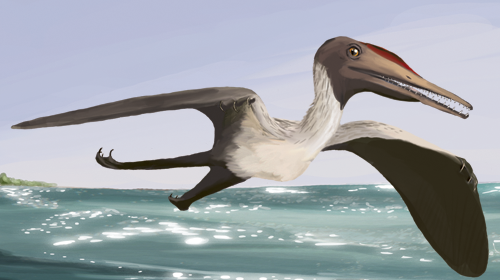
The consistent pattern of choosing wingspan over teeth suggests that aerial niches favor this trade-off so strongly that alternative strategies are evolutionarily unstable. Any flying creature that invests heavily in dental equipment is likely to be outcompeted by more flight-optimized relatives. This creates a evolutionary pressure that continuously pushes flying lineages toward the wingspan-over-teeth strategy.
The competition isn’t just about raw performance—it’s about energy efficiency. A more flight-optimized creature can cover larger territories, access more food sources, and escape ground-based threats more effectively. Over evolutionary time, these advantages compound, making the wingspan-over-teeth strategy nearly mandatory for sustained aerial success.
Climate and Environmental Factors
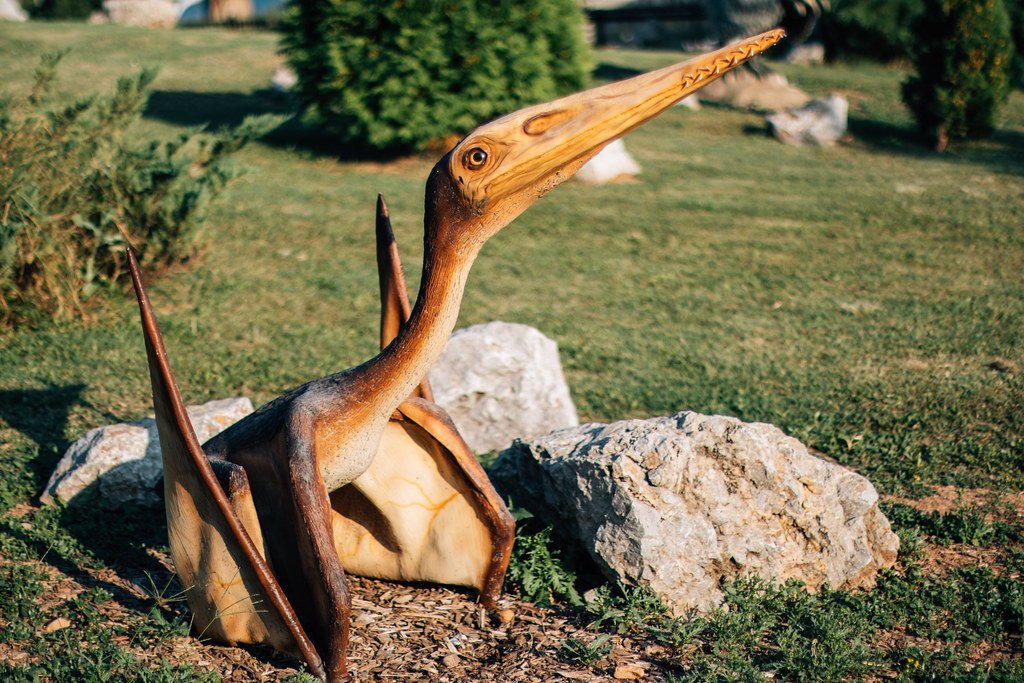
Environmental conditions have played a crucial role in shaping the wingspan-over-teeth evolution. During periods of dense forests, flying creatures with better maneuverability had significant advantages, favoring lighter, more agile builds. Conversely, in open environments, the ability to soar efficiently became paramount, again favoring wingspan over bite force.
Climate changes throughout Earth’s history have repeatedly shifted the balance between different survival strategies. Ice ages, volcanic periods, and mass extinctions all created selection pressures that typically favored the more adaptable and efficient flying creatures over their more specialized, heavier-jawed relatives.
Modern Conservation Implications

Understanding the wingspan-over-teeth trade-off has significant implications for modern conservation efforts. Large flying creatures are often the most vulnerable to environmental changes because their specialized adaptations make them less flexible in the face of habitat loss or climate change. The same evolutionary refinements that made them successful in their original environments can become liabilities in rapidly changing conditions.
Modern conservation strategies must account for these evolutionary constraints. Protecting large flying species requires maintaining vast, connected habitats that can support their energy-intensive lifestyles. The evolutionary commitment to flight over bite force means these creatures cannot simply adapt to smaller territories or different food sources the way more generalized predators might.
The Future of Flight Evolution

As we look toward the future, the wingspan-over-teeth principle continues to shape evolutionary trajectories. Climate change is creating new selection pressures that may favor even more efficient flying creatures. The ability to rapidly traverse changing landscapes and access scattered resources becomes increasingly valuable in an unstable world.
Emerging research suggests that some bird species are already showing evolutionary responses to environmental changes, with trends toward lighter builds and more efficient flight capabilities. The ancient trade-off between wingspan and teeth remains as relevant today as it was 150 million years ago, continuing to guide the evolutionary paths of Earth’s flying creatures.
Conclusion: The Wisdom of Ancient Choices
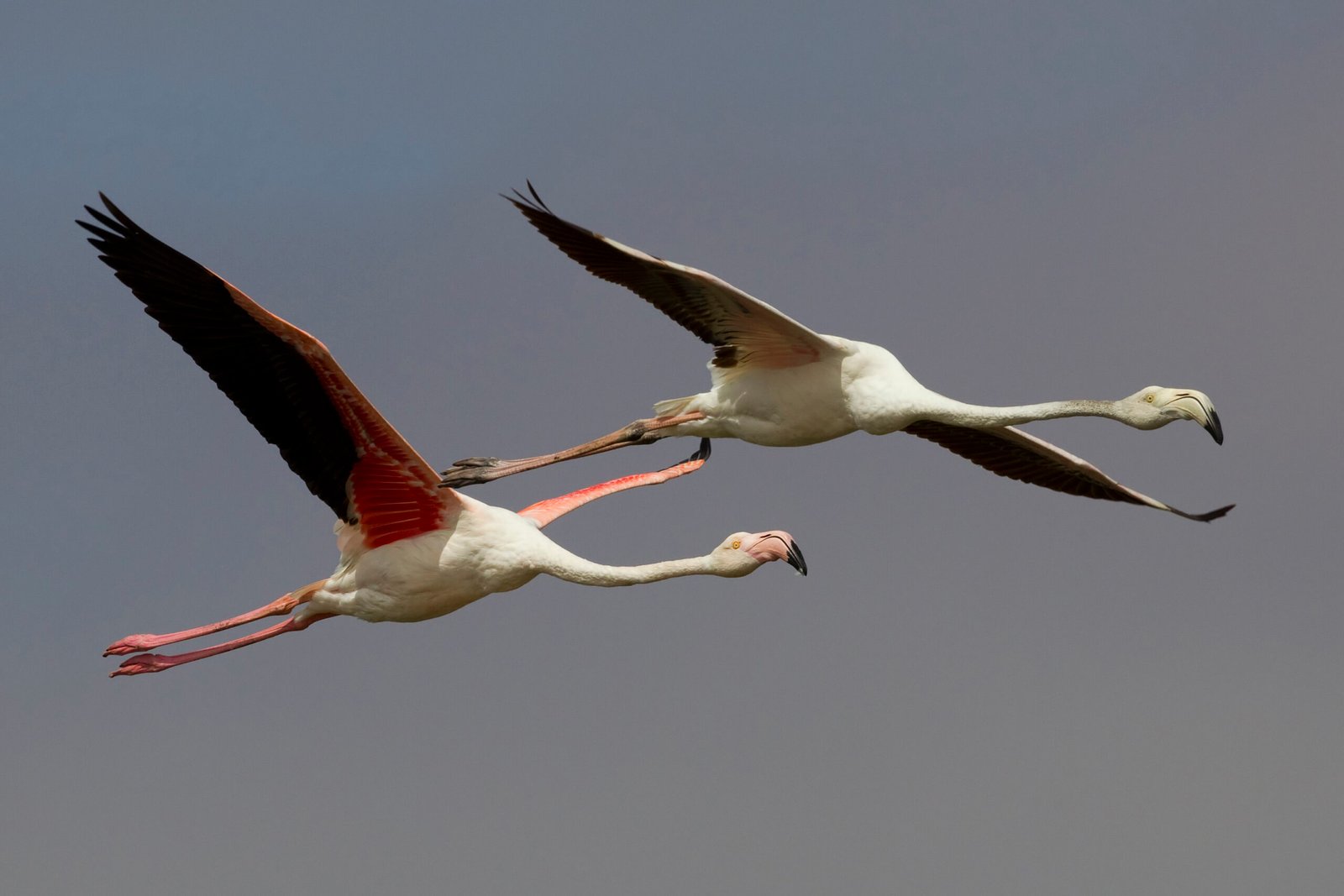
The consistent evolutionary choice of wingspan over teeth reveals a fundamental truth about life on Earth: specialization often requires sacrifice. The flying creatures that dominate our skies today are the descendants of ancient animals that made a crucial bet—that the freedom of flight was worth giving up the crushing power of massive jaws.
This trade-off has proven spectacularly successful, creating some of the most efficient and adaptable creatures on the planet. From the smallest hummingbird to the largest albatross, flying creatures have found ways to thrive without relying on dental weaponry. Their success demonstrates that evolution’s most counterintuitive choices often lead to the most extraordinary outcomes.
The next time you watch a bird soar effortlessly overhead, remember that you’re witnessing the result of millions of years of evolutionary refinement. Every wingbeat represents a choice made long ago—the choice to trade the immediate power of teeth for the ultimate freedom of flight. In nature’s grand experiment, wingspan didn’t just beat teeth—it soared far beyond what teeth could ever achieve.



